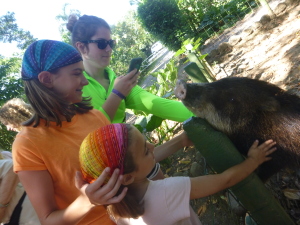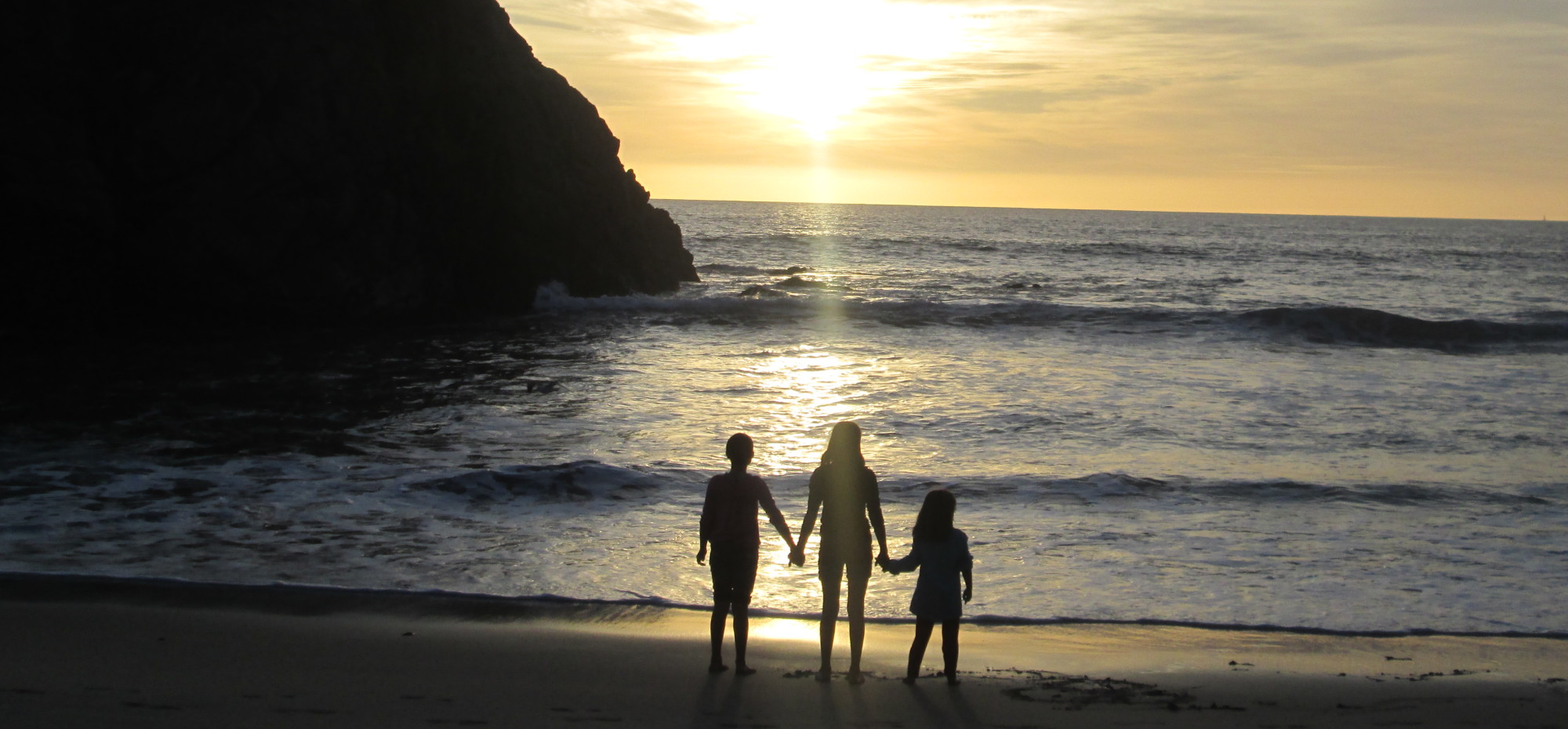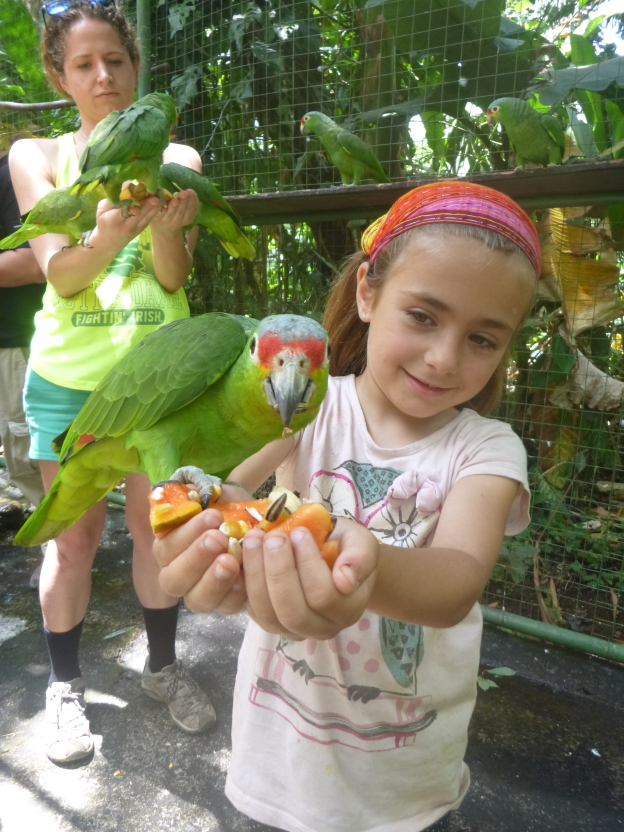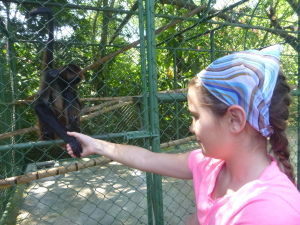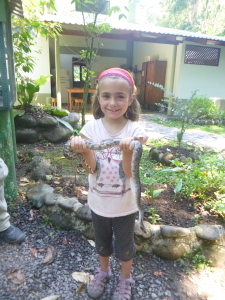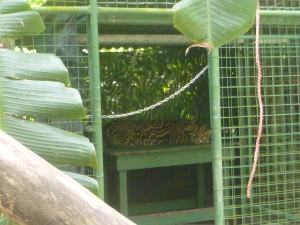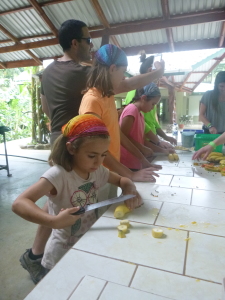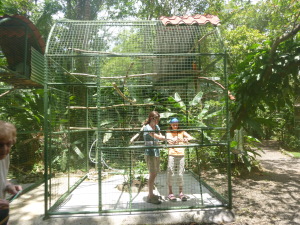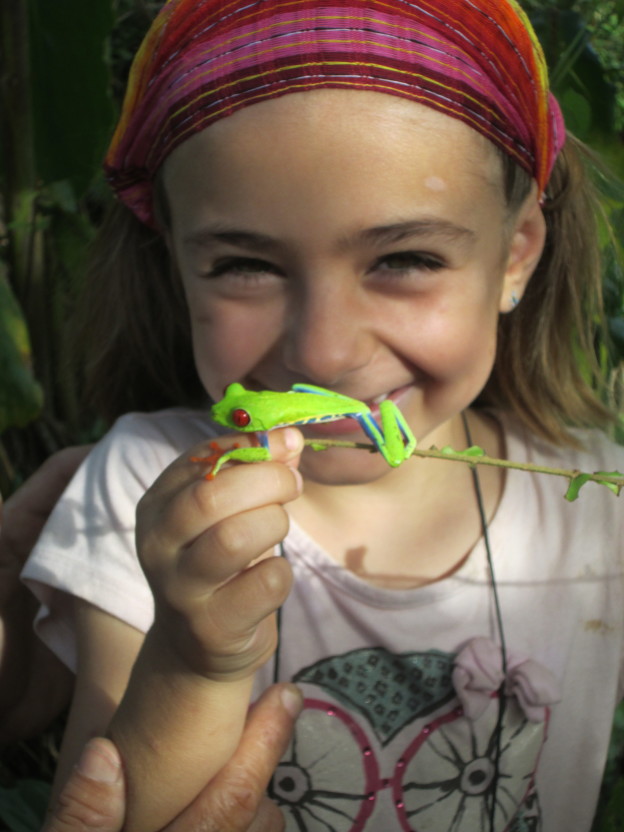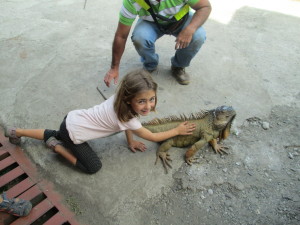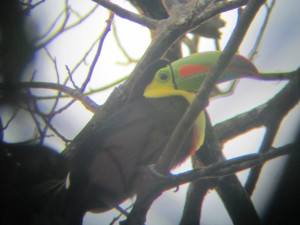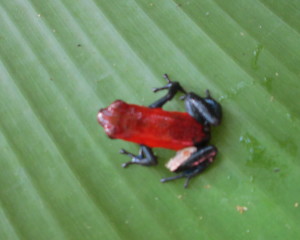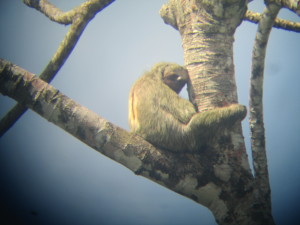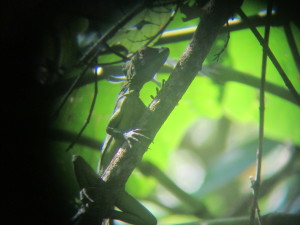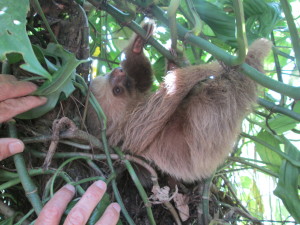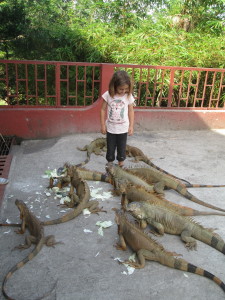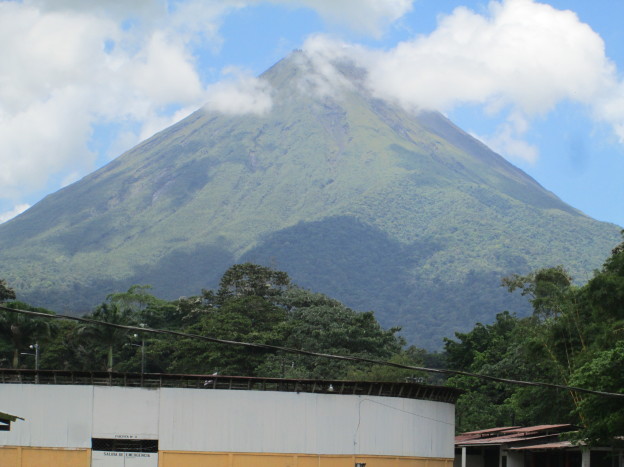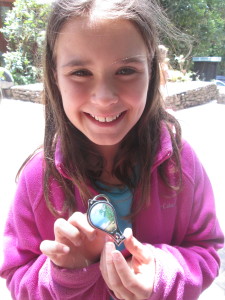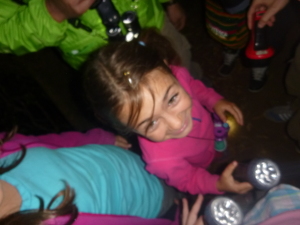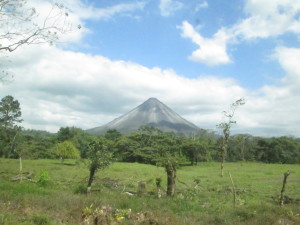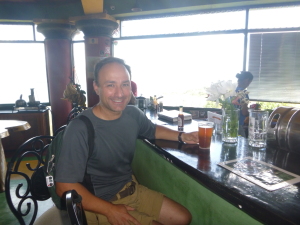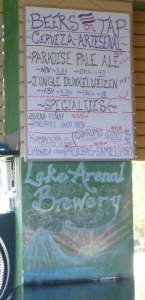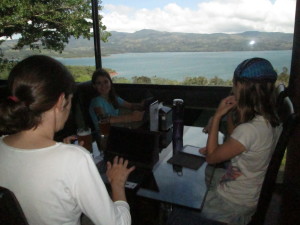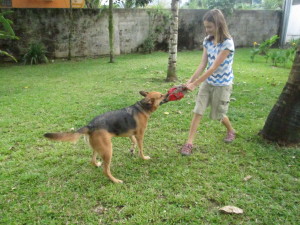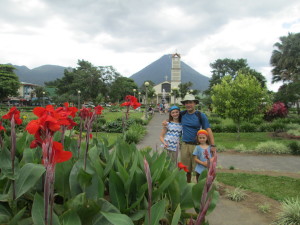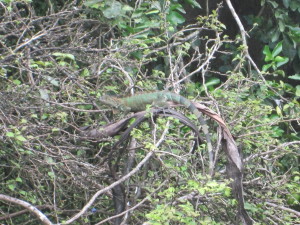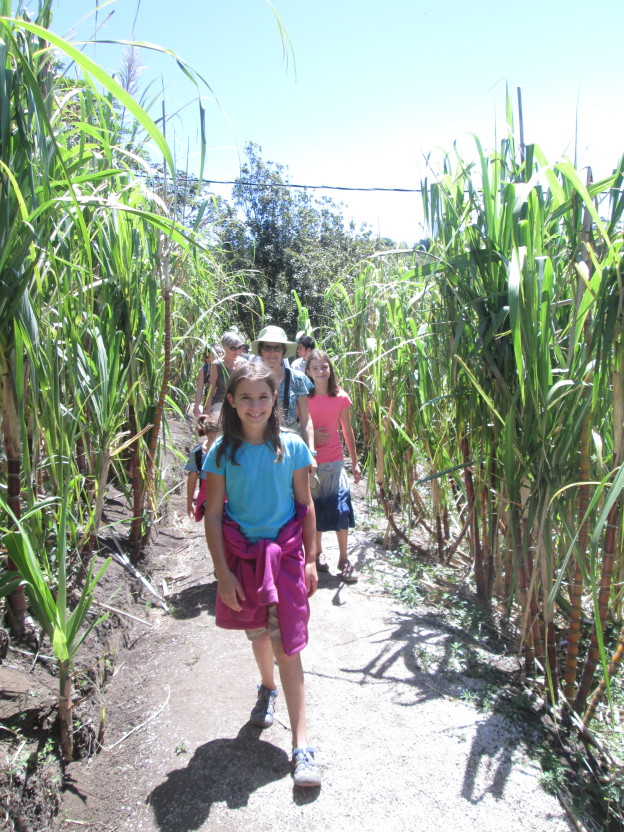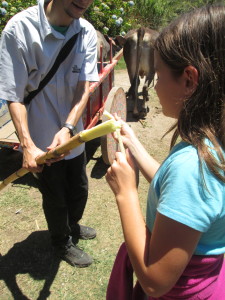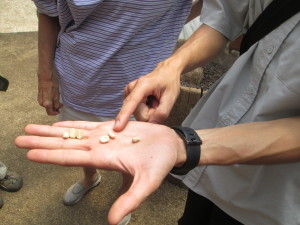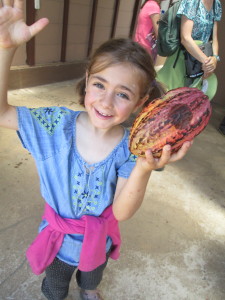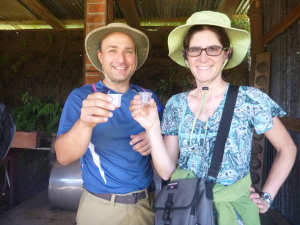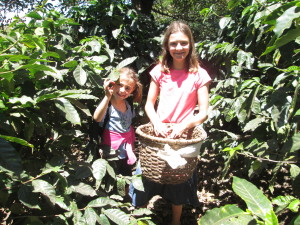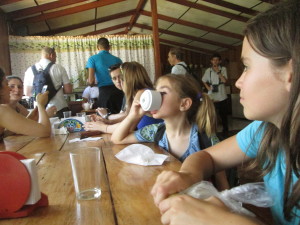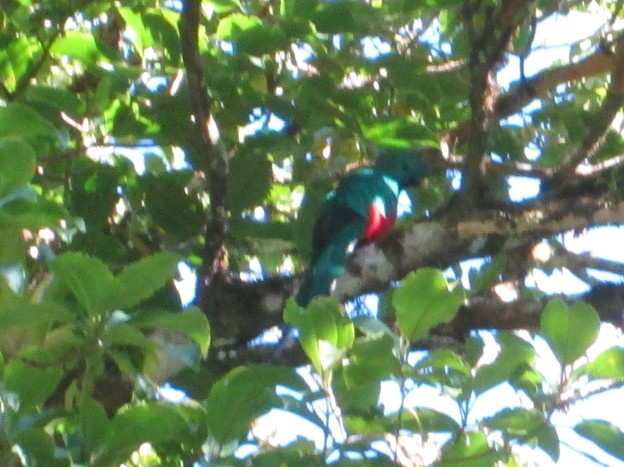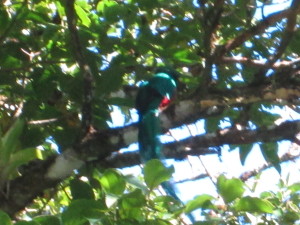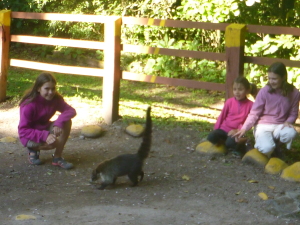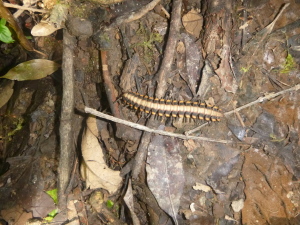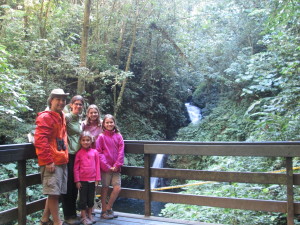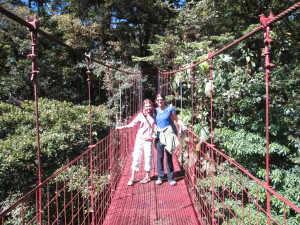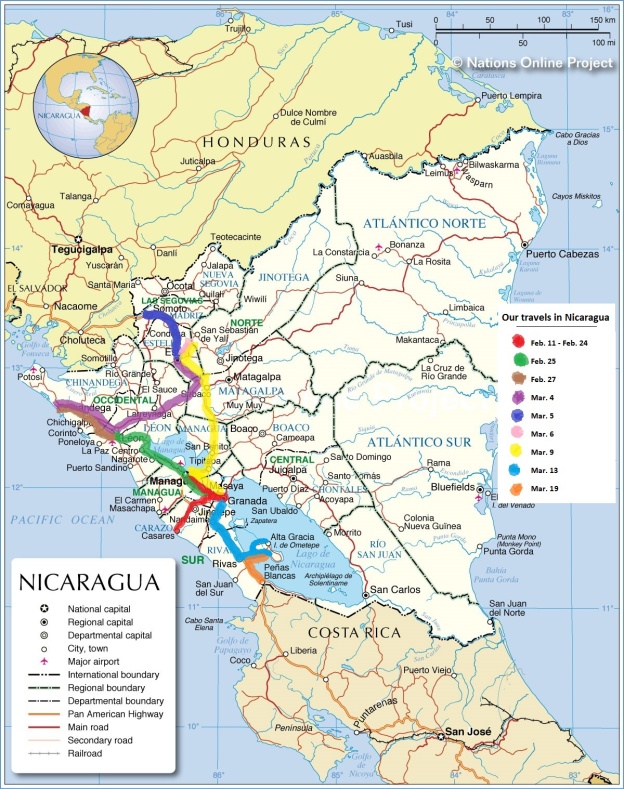Ometepe was our last stop in Nicaragua. From there, after a comfortably uneventful ferry to the mainland (aided in some quarters by Dramamine), we accepted a taxista’s offer of a $25 ride to the border — about 45 minutes south — and began our walk into Costa Rica.
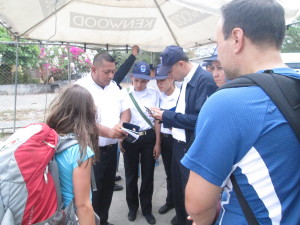
A family of five from the USA makes for a fine seminar in document checking. Most of these people are trainees for the Nicaraguan border service.
The border crossing was not really straight forward. It was more of a zig-zag across a large tractor-trailer parking lot. It suggested some acrimony between Nicaragua and Costa Rica, as if they needed 300 meters and a double row of semis to keep the respective populations from throwing rocks at one another.
Our taxista pointed out disused buildings on both sides of the road about 10 km from the trucks and the parking lot that he said used to be the border. “They were having problems in San Jose and we took some land from them,” is what the taxista appeared to say. “It was many years ago.” I asked him if San Jose (the capital of Costa Rica when I don’t call it San Juan) got angry over that. “Who knows what they think?” the taxista said.
You have to love the Nicaraguans. They took very good care of us, from Leopoldo the night watchman at La Mariposa, to the guy with the potleaf hat on the microbus to Managua, to Marcial in La Miraflor, to this last taxi driver, who gave me tips on speaking Spanish with the Costa Ricans. Basically, after the first major city we got to, Liberia, where many Nicaraguan emigres live, everyone we’ll meet will speak very fast and use strange words. Instead of saying “tranquillo,” the Costa Ricans will say, “pura vida.”
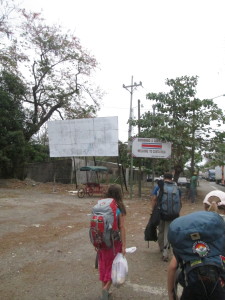
After a long line of tractor trailers, Costa Rica beckons.
It’s more expensive in Costa Rica, too. Many people have told us. “Any question you have, you’ll have to pay $5 for the answer,” somebody once told me. When I express how much we’ve liked Nicaragua, a common response from Nicaraguans has been, “yeah, it’s cheap here.”
So there is a bit of an inferiority complex here, but the Nicos persevere. And they have made a great impression on us. Among the things we’ve appreciated the most has been the public transportation system, which promises to take you anywhere you want in the country provided you switch buses enough times and can get across the larger cities from one terminal to the other. Some American told us early in our time here, “Well…you have to understand that the buses don’t leave until they’re full…” This is a slanderous remark, in Nicaragua at least. Every bus we took (ferries, too, for that matter) left exactly at the posted time. Of course, they have been pretty full, and they tend to get more full as they go along. Still, we found them a very efficient — and yes, cheap — way to get around.
Just a quick word on the term “Chicken Bus,” which is what some people call the local buses. It should be said that while almost all of the local, intercity buses we took were converted school buses, often heavily laden with people and produce, we did not see a single chicken in or on top of a bus. True, we did see one tied to a pillar in the Esteli bus station, but it might have been part of the concession. There was just about every other kind of food imaginable at the terminals.
In fact, I came to the conclusion that it would be pointless to take a chicken on a bus from anywhere to anywhere in Nicaragua because no matter where you ended up, as soon as you got off the bus, there would be more chickens there waiting for you. Chickens are ubiquitous in Nicaragua, except on the buses. In a land of poultry saturation, where almost every night of sleep was perforated by crowing roosters, the chicken buses have been for us a chicken-free zone.
But buses are just one part of the appeal here. I have enjoyed the food, more so than the rest of the family, perhaps. I have become a connoisseur of gallo pinto and I’ve had several fine dishes of chicken with jalapeno sauce. The fruit and vegetables have been very fresh — I even eat beets now, though Jen seems to have abandoned the habit rather quickly. Most dinners have come with a side salad of chopped cabbage that I have liked. Tona beer has been a fine acquaintance on this trip, and the two-for-60 $C mojitos on the main tourist strip of Granada were fine friends, too.
The country boasts two tremendous assets even beyond its budget mixed drinks. The first is its people, kind and patient with my Spanish. Knowledgeable and cheerful, too, as a general characteristic. We have made many friends in Nicaragua. The second is the landscape and natural diversity. It’s been said that we’ll see more animals in Costa Rica, but I don’t know that we’ll have an experience as amazing as the bat cave at the Volcan Masaya National Park, or the crater of Volcan Masaya itself. We may not get as close to a sloth as we did on Mombacho, or as deep in the mud as we did on top of Volcan Maderas. Really, we have no complaints about our experiences in Nicaragua.

It was like a little bit of Durham history, right there in Ometepe.
Especially since the country rolled out a special gift to us on our penultimate day in residence. Traveling from Hotel La Omaja back to Moyogalpa, where we would spend the night before taking the ferry back to the mainland, we stopped at a natural spring pool called Los Ojos del Agua. It was a beautiful spot that caught my attention because it seemed to attract Nicaraguenses and tourists in equal measures. Then Jen pointed out that the pool reminded here of another spring-fed pool we used to frequent. Seacoast NH readers of this blog might recognize a little of the dearly departed UNH Outdoor Pool in the greenish blue water of Los Ojos del Agua. Nicaragua gave us a chance to remember one of our favorite places in Durham — albeit with a tarzan swing, grass-roofed huts, and palm trees — one last time before the future takes over our local outdoor swimming lives. It made us even more sad to say we’re on our way.
When I’ve told Nicaraguans how much I like it here, they frequently ask (after noting how cheap it is) if we’ll come back. I almost always say yes, though I’m not really as sure as I sound. There are many places to visit in this world and we have a limited amount of time to travel. We definitely plan to stay involved in the country, possibly by helping to fund Paulette’s projects in La Concepcion or the orphanage in Ometepe where our hotel owner volunteered.
If we do ever return, it’s not clear that we’ll be coming back to the same place. Most tourists we’ve talked to seem to agree that Nicaragua is poised for major changes in the coming decade. It’s likely we’ll find more paved roads with extra lanes, more walled communities, more mega resorts, fewer drink deals. I hope that the Nicaraguans don’t get left out of this. It’s worth noting that every place we stayed in, except for our hotel in Granada, was owned by foreigners. I don’t think we consciously discriminated against Nicaraguans. It’s possible that foreigners are more savvy about marketing themselves online, where Jen does her research. I hope that some Nicaraguans studying at UCA in Managua today learn to use this tool and become able to grab some of the flood of tourist dollars for themselves. There certainly are tons of reasons why people reading this blog should consider coming down for a week or so, and it would be nice to think of some of our friends, or their children or nieces, benefiting from your patronage.
